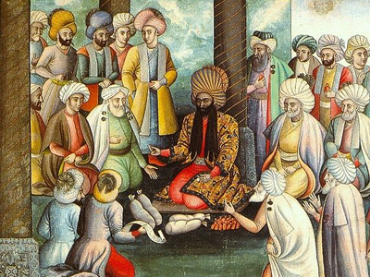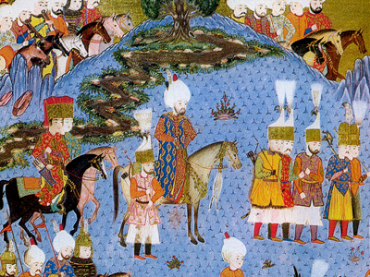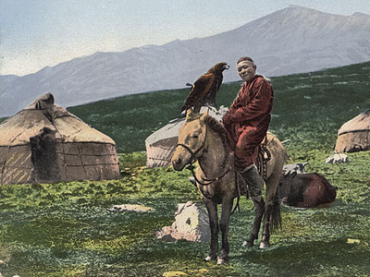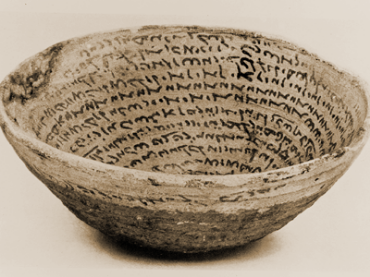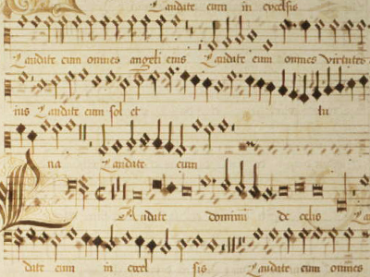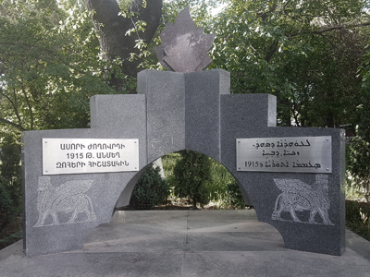History
Clement of Alexandria and the Beginnings of Christian Platonism
Series: Analecta Gorgiana 59
ISBN: 978-1-59333-874-9
Casey’s survey reveals not only his adept insights into Clement’s thought but also the great breadth of his knowledge of the Greek philosophers and the early Jewish and Christian theologians in the Roman Empire.
$45.00
The Acts of the Edessan Martyrs Guria and Shmona, and Habib and the Story of their Deliverance of Eu
ISBN: 978-1-59333-872-5
In this book the Syriac texts along with translations of the tales of the martyrs themselves as well as the miraculous deliverance of Euphemia are introduced by Professor Burkitt with a commentary focusing on the historicity of the different accounts.
$151.00
Shmona, Guria and Habib Edessan Martyrs
Texts and Translations with Notes and Commentary
Series: Analecta Gorgiana 58
ISBN: 978-1-59333-873-2
In this book the Syriac texts along with translations of the tales of the martyrs are introduced by Professor Burkitt with a commentary focusing on the historicity of the different accounts.
$71.00
The Tale of Euphemia and the Goth
Text and Translation with Notes and Commentary
Series: Analecta Gorgiana 57
ISBN: 978-1-59333-876-3
This book provides the Syriac text along with a translation of the tale of Euphemia and the martyrs’ deliverance of her from the Goth.
$56.00
The Life of Severus by Zachariah of Mytilene
By Lena Ambjörn
Series: Texts from Christian Late Antiquity 9
ISBN: 978-1-59333-841-1
This biography of Severus, the patriarch of Antioch from 512-518 CE, attributed to his schoolmate Zachariah of Mytilene, gives unique information about life in Mediterranean region in the second half of the 5th century. These two young men from wealthy families became involved with a Christian movement, the "philoponoi," "those devoted to work" who combined asceticism with theological study. The work, originally in Greek, survives only in Syriac, which this volume presents alongside the first English translation of it. It is an important source for studies on Ancient Biography, Late Antiquity, and Early Christianity.
$44.00
The Discoveries in Crete
And their Bearing on the History of Ancient Civilization
Series: Kiraz Classic Archaeological Reprints 3
ISBN: 978-1-59333-955-5
Indeed a classic of accessible archaeological writing, Burrows’ study of ancient Crete was one of the main contributors to the commencement of modern understanding of the Minoans. The earliest traces of the Minoan civilization are sketched out before he turns to the historical periods when Minos flourished. The sack of Knossos and the end of the Bronze Age are narrated against the archaeological background. Aware of the cultural continuity of classical stories from the island, he introduces the topic of the minotaur and the famed labyrinth of Knossos. For anyone interested in the roots of western civilization, or of the founding of classical civilizations, this book remains an essential reading.
$149.00
The Early Syriac Lectionary
Series: Analecta Gorgiana 62
ISBN: 978-1-59333-878-7
This piece provides an introduction, translation and commentary to a previously unstudied lectionary text, which provides deeper insight into early liturgical practice and the conception of the canon; and includes an index of the lessons according to books of Scripture.
$41.00
The Barlaam and Josaphat Legend in the Ancient Georgian and Armenian Literatures
Series: Analecta Gorgiana 64
ISBN: 978-1-59333-880-0
This work focuses on the literary and textual concerns of the Georgian and Armenian recensions of the Barlaam and Josaphat legend, and provides translations of all that remains of the Georgian text and the relevant Armenian parallels.
$41.00
The Jews in the Works of the Church Fathers
Sources for Understanding the Agaddah
Series: Analecta Gorgiana 67
ISBN: 978-1-59333-883-1
In this stellar study of what the works of select patristic authors (Justin Martyr, Clement of Alexandria, Origen, Eusebius Ephraem, and Jerome) reveal about the Aggadah, Samuel Krauss offers an insightful and provocative reading of the sources.
$53.00
Jacob of Sarug’s Homily on the Judgment of Solomon
Metrical Homilies of Mar Jacob of Sarug
Series: Texts from Christian Late Antiquity 17
ISBN: 978-1-59333-972-2
This edition of Mar Jacob of Sarug's (d. 521) homily on the story of Solomon and the two harlots imagines the emotional state of the new king Solomon as he sits on his throne uncertain of his ability to rule and judge. The volume constitutes a fascicle of The Metrical Homilies of Mar Jacob of Sarug, which, when complete, will contain the original Syriac text of Jacob's surviving sermons, fully vocalized, alongside an annotated English translation.
$29.00
The Correspondence of Severus and Sergius
Translation and Introduction by Iain Torrance
Series: Texts from Christian Late Antiquity 11
ISBN: 978-1-59333-971-5
Severus of Antioch was the Patriarch of Antioch and a moderate Miaphysite. Sergius the Grammarian is a lesser-known figure, but the content of his letters demonstrates that he was a more extreme Miaphysite. The early 6th century correspondence between the two consists of a set of three letters apiece and an apology by Sergius. Made available in Syriac along with Torrance’s translation, these letters are an important part of the working out of concerns associated with the Council of Chalecedon.
$59.00
Reliquary of Ancient Ecclesiastical Laws
Reliquiae Iuris Ecclesiastici Antiquissimae
ISBN: 978-1-59333-988-3
A notable resource for both church historians and linguists, this work of Lagarde contains both Syriac and Greek materials concerning ancient ecclesiastical laws. A number of ancient documents are cited in this unusual collection. Half of this collection is presented in the original Syriac and half in the original Greek. All introductions and notes are written in Latin. Intended for the serious linguist and church historian, this work requires language skills to unravel. As a collection of materials that had been inaccessible up to Lagarde’s time, this volume also serves as a period piece containing a fresh view of writings that helped inform the growth of canon law.
$159.00
A Catalogue of the Arabic Manuscripts in the Library of the India Office
By Otto Loth
Series: Kiraz Historical Catalogues Archive 4
ISBN: 978-1-59333-925-8
Commissioned by the Indian government to prepare a descriptive catalogue of the Arabic manuscripts of the Library of India Office in London, Loth produced this reference work. A total of 1,050 manuscripts are covered in the catalogue. At the time of the composition of Loth’s work, only one of the items in the catalogue had even been the subject of an edition, indicating that the vast majority of items were unknown until the late 1870s.
$165.00
Katalog der Islamischen, Christlich-Oreientalischen, Judischen und Samaritanischen Handschriften der
By K. Vollers
Series: Kiraz Historical Catalogues Archive 5
ISBN: 978-1-59333-930-2
This catalogue presents the Islamic, Oriental Christian, Judaic and Samaritan manuscripts in the University library of Leipzig’s collection. The largest part of the material is Islamic, and it is presented here according to categories. Manuscripts are described by title (if known) and a brief summary of the contents. Dimensions for most of the pieces are given as well. The Christian material includes manuscripts in Arabic, Syriac, Coptic, Ethiopic, and Georgian. A numerical concordance adds to the utility of this important manuscript collection.
$211.00
Coptic Monuments
Catalogue Général des Antiquités Égyptiennes du Musée du Caire
By W. E. Crum
Series: Kiraz Historical Catalogues Archive 6
ISBN: 978-1-59333-931-9
In this historic catalogue, Crum presents the Coptic monuments of the Museum of Cairo. Although given a French title, the contents of this book are written in English. Some of the more striking items are presented with beautifully drawn sketches of relevant sections of the source. As a museum book, this catalogue is amply illustrated with 57 black and white plates. A variety of artifacts are described: manuscripts, ostraca, and stelae, and indices round out the utility of this volume. A specialized collection from early Christian Egypt, this book will be welcomed by specialists in Coptic materials still found in their native land.
$143.00
Catalogue of the Turkish Manuscripts in the British Museum
By Charles Rieu
Series: Kiraz Historical Catalogues Archive 7
ISBN: 978-1-59333-932-6
This volume records and describes the 483 Turkish manuscripts in the British Museum at the time of the author. Most of the manuscripts are in Western Turkish, and a few in Eastern. The material is helpfully categorized according to the area of particular concern to the manuscript. Various aspects of Islamic religious practice are covered by several manuscripts. Other general areas represented are history, sciences, the arts, philology, and poetry. The Eastern Turkish materials are given their own section. Each manuscript is meticulously described, and the volume contains useful indices of titles, personal names, and subjects. A must have for any Turkologist, this historic catalogue is once again available.
$174.00
Die Alten Thraker Ein ethnologische Untersuchung
ISBN: 978-1-59333-941-8
Tomaschek’s seminal study on the Thracians has become a volume difficult to locate. This edition is the rarer first volume of his explorations of the ethnology of this poorly understood culture. Examining the tribes within the Thracian region, Tomaschek also looks at the traits of the Thracians in general. Consideration of the language is also given, including the names of gods and cultic terms. Personal names, regional and ethnic names, and the terms for mountains, hills, rivers, and seas are also part of the lexical study. Written in German, this historic study is now once again readily accessible to scholars.
$158.00
Jacob of Sarug’s Homilies on Elijah
Metrical Homilies of Mar Jacob of Sarug
Translation and Introduction by Stephen A. Kaufman
Series: Texts from Christian Late Antiquity 18
ISBN: 978-1-59333-942-5
This volume collects all of Mar Jacob of Sarug's (d. 521) extant homilies on the prophet Elijah. In these homilies Jacob shows a remarkable sensivity to the human motivations of the biblical characters which was quite rare in ancient biblical exegesis. The volume constitutes a fascicle of The Metrical Homilies of Mar Jacob of Sarug, which, when complete, will contain the original Syriac text of Jacob's surviving sermons, fully vocalized, alongside an annotated English translation.
$99.00
Ibn Coteiba's Handbuch der Geschichte
Series: Kiraz Chronicles Archive 29
ISBN: 978-1-59333-949-4
An early example of Islamic history, the Kitab al-ma'arif (“Book of Knowledge”) of ibn Qutayba (ibn Coteiba) has a prominent place. Born in Kufa, in present-day Iraq, ibn Qutayba was a teacher in Baghdad and he was among the first formal historians. This particular work ambitiously covers topics from the beginning of creation and facts about the period before the appearance of Islam (jahiliyya) to the names of the companions of the prophet Mohammed, famous jurists and masters of the oral tradition associated with the prophet (hadith). Presented here in the original Arabic, along with an introduction by Wüstenfeld, this early manual of history is sure to be of interest to anyone considering Islamic outlooks from the ninth century.
$174.00
Catalogue of the Arabic, Persian, and Turkish Manuscripts of the Upsala University Library
Codices Arabici, Persici et Turcici Bibliothecae Regiae Universitatis Upsaliensis
Series: Kiraz Historical Catalogues Archive 8
ISBN: 978-1-59333-900-5
As the title of the volume ably indicates, this historical catalogue is a record of the Arabic, Persian and Turkish codices in the library of the Royal University of Uppsala. After a substantial introduction in Latin he divides the materials into the different types of documents they represent. A wide variety of topics are covered. A set of indices help to locate specific topics addressed in this wide variety of materials. An unsurpassed catalogue of the holdings in Uppsala, this reference is now once again accessible to scholars and general readers alike.
$177.00
Homer and the Bronze Age
The Reflection of Humanistic Ideals in Diplomatic Practices
Series: Gorgias Studies in the Ancient Near East 2
ISBN: 978-1-59333-985-2
Peter Karavites presents a revisionist overview of Homeric scholarship, whose purpose is to bridge the gap between the “positivist” and “negativist” theories dominant in the greater part of the twentieth century. His investigation derives new insights from Homer’s text and solves the age old question of the relationship between Homer and the Mycenaean age.
$148.00
Catalogue of the Oriental Manuscripts of the Saxon State Library at the Dresden University of Techno
Catalogus Codicum Manuscriptorum Orientalium Bibliothecae Regiae Dresdensis
Series: Kiraz Historical Catalogues Archive 9
ISBN: 978-1-59333-904-3
This historic catalogue documents the oriental manuscripts of what is now the Saxon State Library at the Dresden University of Technology. Formerly the Royal Library of Dresden, this repository houses numerous manuscripts from antiquity. Catalogued before the tragic bombing of Dresden during WWII, this historic record, written in Latin, briefly describes the nearly 600 documents in the collections of Dresden and Guelferbytan at that time. Valued more as a historical memento, this catalogue provides a sense of importance of the manuscripts housed in the library of the early 19th century capital of Saxony. Adding to the utility of his register are the indices to the codices included with the collection.
$123.00
Bibliotheca Arabico-Hispana Escurialensis
Series: Kiraz Historical Catalogues Archive 10
ISBN: 978-1-59333-908-1
Eager to preserve the Spanish and Arabic heritage, Miguel Casiri set out to catalogue the 1800 Arabic manuscripts in the Royal Monastery of San Lorenzo El Real, known generally by the title El Escorial. The resulting work was a monument of scholarship in the eighteenth century. Containing a number of quotes from Arabic sources on history, geographical and historical manuscripts, full text of both volumes, indicies, and subject divisions, this edition, part of Gorgias Historical Catalogues, serves as a historic and linguistic study, as well as a reference work.
$366.00
Seeing Egypt and the Holy Land
By E. M. Newman
Series: Kiraz Historic Travels Archive 20
ISBN: 978-1-59333-911-1
With the characteristic compelling photographs that accompany his work, E. M. Newman here presents his unique outlook on Egypt and the Holy Land. Written with the competence of a professional travel writer, Newman takes the reader through his arrival in Egypt by ship and on a virtual tour of the noted wonders of that land. His impressions of Egypt, Palestine, the Arabian Desert and Sinai are all dutifully recorded. Finishing up with the accounts of his main New Testament sites, Nazareth, the Jordan River, Bethlehem, and Jerusalem, this travelogue contains a wealth of impressions and memories. Illustrated with over 300 photographs, this volume gives a visually descriptive tour of these ancient lands.
$185.00
The Conquest of Syria
Bibliotheca Indica
Series: Kiraz Chronicles Archive 19
ISBN: 978-1-59333-913-5
A representative of the Arabic genre known as “futuh reports,” The Conquest of Syria remains an important historical source although it is now recognized not to be the work of Abu Abdullah Muhammad Ibn Omar Ibn Waqid al-Aslami (called al-Waqidi). This Arabic document, part history, part romantic reconstruction of the past, is one of the main sources narrating the Muslim conquest of Syria. A window into the world of early Muslim self-perception, these documents are a valuable historical source in the sense of being period pieces. Here the Arabic text is presented along with the partial notes and comments of W. Nassau Lees, a noted writer on Eastern culture.
$289.00
Filter by
Filter by price
Filter by manufacturer

